Rabbit Holes & Root Beer
Help! I’ve burrowed down another rabbit hole, and I’m stuck in a warren full of of too many possibilities. So deep am I into the research for my next book that I lost track of time. Which is to say, I almost forgot to write this post.
So deep am I into the research for my next book that I lost track of time. Which is to say, I almost forgot to write this post.
With no plan for what to post today, I turned to a holiday calendar for inspiration. Maybe this date in history would spark and idea. Boy, did it ever, though it sent me burrowing even deeper.
Turns out, today is National Black Cow Day. Curious as to why we should celebrate dark bovines, I clicked and learned that today’s Black Cow hoopla is all about a drink I’d always known as a root beer float—that delicious concoction of vanilla ice cream melting inside a tall, icy glass of root beer.
Okay, I thought, a fun subject, but not meaty enough to write about—until I read more, and discovered sassafras.
Sassafras is an incredibly fun word to say out loud. (Try it!)
It’s also the original ingredient in root beer, first marketed in America in the 19th century by Philadelphia pharmacist Charles Hires. But that’s not what kept me deep inside that rabbit hole.
When I discovered how important sassafras was to native tribes across the eastern half of what became America, I had to read on.
Here’s why: Attentive readers of my Samantha Newman Mystery Series may recall a mention in Book 3, The Body in the News, of the discovery of a possible ancient Native American campsite on Carter Chapman’s Serenity Ranch. With the idea of that as a plot point in the next book, I’ve been researching indigenous people who may have once inhabited the region.

Cornell Botanic Gardens
Who were these people? What did they eat? What tools did they use? Were they peaceful, or warlike? What might they have left behind at the campsite? I’ve already done a ton of research based on those questions, with more to go. And, to that, I now add this question: Did sassafras trees grow on their land?
Today I learned that every part of the sassafras tree was used by Native Americans from the east coast to west of the Mississippi into Central Texas. Roots from which root beer flavoring is derived were used as toothbrushes. An emetic made from bark was used in purification after funeral ceremonies. Leaves, rubbed onto bee stings, wounds, cuts, sprained ankles, and bruises, were thought to have healing properties.

Ground Sassafras/Cornell Botanic Gardens
Timber from the sassafras tree was used in construction, furniture making, and—when explorers learned of its utility— shipbuilding. By the early 18th century, sassafras became the second-most exported American product, right behind tobacco.
I could tell you everything I’ve learned about sassafras and the possible tribes who may once have hunted on what’s now Carter Chapman’s Serenity Ranch in my books, but I’m running out of time to get this posted.
Also, I have to get back to my research.

bittersoutherner.com
But I’ll leave the foodies among you with one more sassafras fact: its leaves were also dried and pulverized for use as a thickening and flavoring agent. If you’ve ever had true Cajun gumbo, you’ve enjoyed the flavor of filé, made from ground roots or leaves of the sassafras tree.
All of which makes me hungry for some gumbo right now. Maybe I’ll chase it with a few frosty swigs of a root beer float.
Happy National Black Cow Day to you, and may your day be full of fun adventures, down rabbit holes or wherever you roam.
 Gay Yellen is the author of the award-winning
Gay Yellen is the author of the award-winning
Samantha Newman Mystery Series including:
The Body Business, The Body Next Door, and The Body in the News!


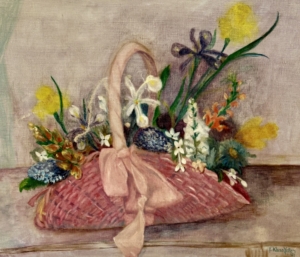
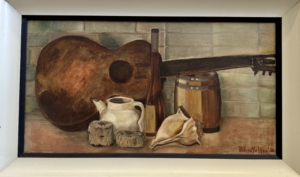
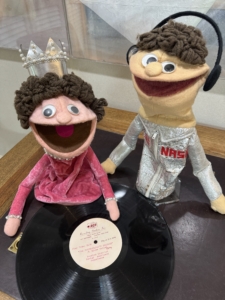

 a primary requirement for both jobs is to love the knowledge that books impart to us.
a primary requirement for both jobs is to love the knowledge that books impart to us. My brother and his wife take their grandkids to the library every week for story hour and games. It’s a great way to introduce the young ones to books and the comforts a library can provide.
My brother and his wife take their grandkids to the library every week for story hour and games. It’s a great way to introduce the young ones to books and the comforts a library can provide.
 USA Today and Amazon bestselling author Lois Winston began her award-winning writing career with
USA Today and Amazon bestselling author Lois Winston began her award-winning writing career with  But I am firm about sticking to set writing hours and setting word and page count goals to keep me focused. I eliminate most distractions, and I reward myself frequently… lots of snacks!
But I am firm about sticking to set writing hours and setting word and page count goals to keep me focused. I eliminate most distractions, and I reward myself frequently… lots of snacks! Between the time I outlined Walker Prairie (2021) and when I wrote it (2024), I acquired two Alaskan Malamute sled dogs, Willett and Sibley! They seemed like the perfect lighthearted addition to Jenn and Aaron’s world, so I wrote them in, and just like in real life, they proceeded to WOO and HOWL and JUMP AROUND until they’d pretty much hijacked the book. The plot remained the same, but the adventure elements surrounding the climactic scenes changed to feature two beautiful, often-naughty, and occasionally terrifying FLOOFS (my term for fluffy goofs.)
Between the time I outlined Walker Prairie (2021) and when I wrote it (2024), I acquired two Alaskan Malamute sled dogs, Willett and Sibley! They seemed like the perfect lighthearted addition to Jenn and Aaron’s world, so I wrote them in, and just like in real life, they proceeded to WOO and HOWL and JUMP AROUND until they’d pretty much hijacked the book. The plot remained the same, but the adventure elements surrounding the climactic scenes changed to feature two beautiful, often-naughty, and occasionally terrifying FLOOFS (my term for fluffy goofs.)
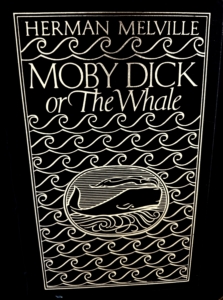 If ever a book begged for an abridged version (I thought back then), Melville’s was a good candidate.
If ever a book begged for an abridged version (I thought back then), Melville’s was a good candidate.
 Gay Yellen
Gay Yellen

 Or, perhaps we just want to work at developing a new and improved version of ourselves.
Or, perhaps we just want to work at developing a new and improved version of ourselves. Yet I heartily agree with #29. Dogs absolutely make make us better humans. And though I can’t remember the last time I waved at kids on a school bus (#33), I always wave at them when the zoo train comes around. Hopefully that counts.
Yet I heartily agree with #29. Dogs absolutely make make us better humans. And though I can’t remember the last time I waved at kids on a school bus (#33), I always wave at them when the zoo train comes around. Hopefully that counts.


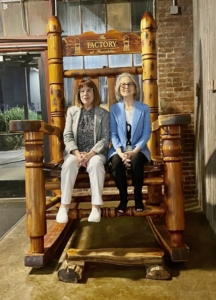
 This time, I was expected to say something. My mind still reeling over actually winning, I stepped up to the mic and thanked whoever it was who’d determined that
This time, I was expected to say something. My mind still reeling over actually winning, I stepped up to the mic and thanked whoever it was who’d determined that 

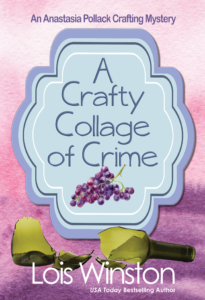 Breaking News! I’m thrilled to announce that A Crafty Collage of Crime, the 12th book in my Anastasia Pollack Crafting Mysteries, is a Killer Nashville Silver Falchion finalist for best Comedy.
Breaking News! I’m thrilled to announce that A Crafty Collage of Crime, the 12th book in my Anastasia Pollack Crafting Mysteries, is a Killer Nashville Silver Falchion finalist for best Comedy. USA Today and Amazon bestselling and award-winning author Lois Winston writes mystery, romance, romantic suspense, chick lit, women’s fiction, children’s chapter books, and nonfiction. Kirkus Reviews dubbed her critically acclaimed Anastasia Pollack Crafting Mystery series, “North Jersey’s more mature answer to Stephanie Plum.” In addition, Lois is a former literary agent and an award-winning craft and needlework designer who often draws much of her source material for both her characters and plots from her experiences in the crafts industry. Learn more about Lois and her books at her website where can also sign up for her newsletter and find links to her other social media:
USA Today and Amazon bestselling and award-winning author Lois Winston writes mystery, romance, romantic suspense, chick lit, women’s fiction, children’s chapter books, and nonfiction. Kirkus Reviews dubbed her critically acclaimed Anastasia Pollack Crafting Mystery series, “North Jersey’s more mature answer to Stephanie Plum.” In addition, Lois is a former literary agent and an award-winning craft and needlework designer who often draws much of her source material for both her characters and plots from her experiences in the crafts industry. Learn more about Lois and her books at her website where can also sign up for her newsletter and find links to her other social media:  I love food, and I think about it almost every hour of the day.
I love food, and I think about it almost every hour of the day.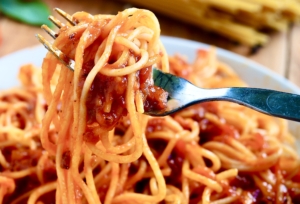 It has been suggested that I offer recipes for a few of the dishes. I’ve toyed with the idea of running a reader contest to supply some of them. But it’s not the preparation that interests me. It’s the food—the aromas, the textures, the savory, sweet, or umami tastes that I crave.
It has been suggested that I offer recipes for a few of the dishes. I’ve toyed with the idea of running a reader contest to supply some of them. But it’s not the preparation that interests me. It’s the food—the aromas, the textures, the savory, sweet, or umami tastes that I crave.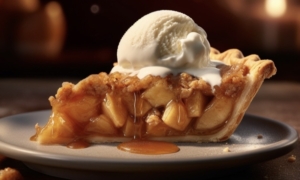 And so, I’ve foisted these cravings onto Samantha Newman herself, and a few of her friends as well. Sam doesn’t cook, but her pal Gertie is a regular Julia Child in the kitchen. And Carter’s intrepid housekeeper, Dottie, makes country-style dishes to die for. You’ve never had pie until you’ve had a slice of Dottie’s.
And so, I’ve foisted these cravings onto Samantha Newman herself, and a few of her friends as well. Sam doesn’t cook, but her pal Gertie is a regular Julia Child in the kitchen. And Carter’s intrepid housekeeper, Dottie, makes country-style dishes to die for. You’ve never had pie until you’ve had a slice of Dottie’s.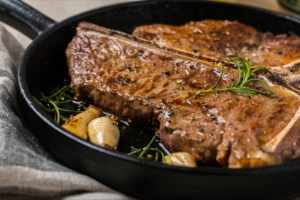
 There’s more food in the series than anyone could eat in a week, from gourmet offerings to down-home cooking, not to mention doughnuts, brownies, and lots of ice cream. (Oops, I just did mention them, didn’t I?)
There’s more food in the series than anyone could eat in a week, from gourmet offerings to down-home cooking, not to mention doughnuts, brownies, and lots of ice cream. (Oops, I just did mention them, didn’t I?)